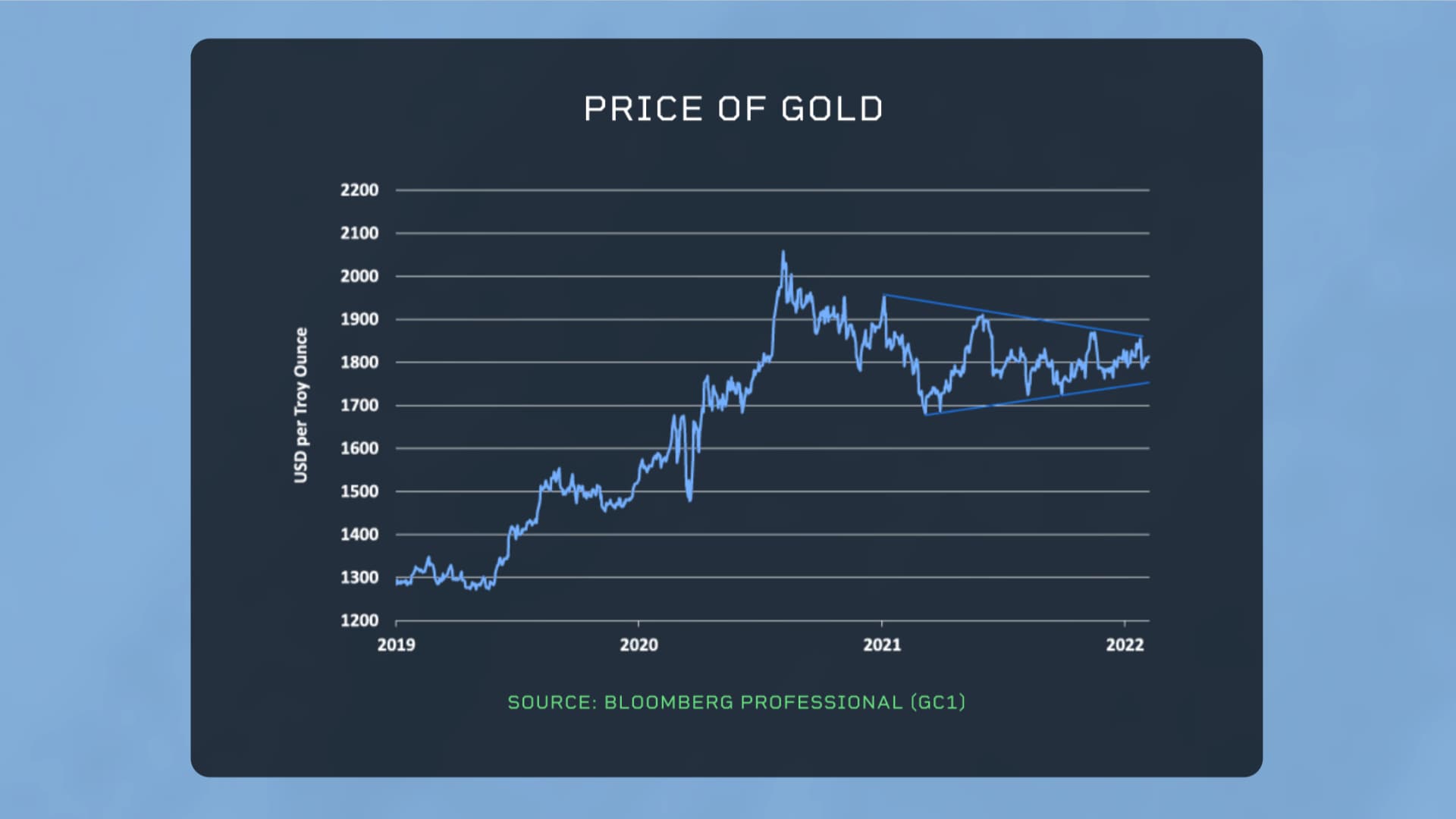This post contains sponsored advertising content. This content is for informational purposes only and not intended to be investing advice.
AT-A-GLANCE
- Inflation and the potential for multiple Federal Reserve rate hikes could be pulling gold in different directions
- Over the past seven years, gold prices have shown negative correlation with changes in expectations for Fed rate hikes
With U.S. inflation rising above 7% and surging in volatility in bond and stock markets, why has gold been so stable? The yellow metal, whose price rose over 50% in 2019 and 2020 has been trading in a narrower and narrower range.

It seems that there are two forces, of roughly equal strength, pulling gold in opposite directions. On the one hand, higher inflation is reducing the purchasing power of fiat currencies like the U.S. dollar. In theory, this should support the price of gold.
On the other hand, investor expectations for U.S. monetary policy have changed dramatically. As recently as October, investors didn’t even price one single Fed rate hike for the next year. Now, just four months later, investors price that the Fed could hike rates five or six times in the next 12 months.
This change in investor expectations may be what has held gold back from rallying. Gold can be seen as a currency that pays no interest on deposits. As such, when central banks tighten monetary policy, investors often perceive fiat currencies as becoming relatively more attractive. Indeed, over the past seven years, gold prices have shown a consistent negative correlation with changes in expectations for Fed rate hikes.
Getting gold to break out of its current range, might depend on one of these two forces, inflation, or rate expectations, gaining the upper hand.
This post contains sponsored advertising content. This content is for informational purposes only and not intended to be investing advice.
© 2025 Benzinga.com. Benzinga does not provide investment advice. All rights reserved.
Trade confidently with insights and alerts from analyst ratings, free reports and breaking news that affects the stocks you care about.